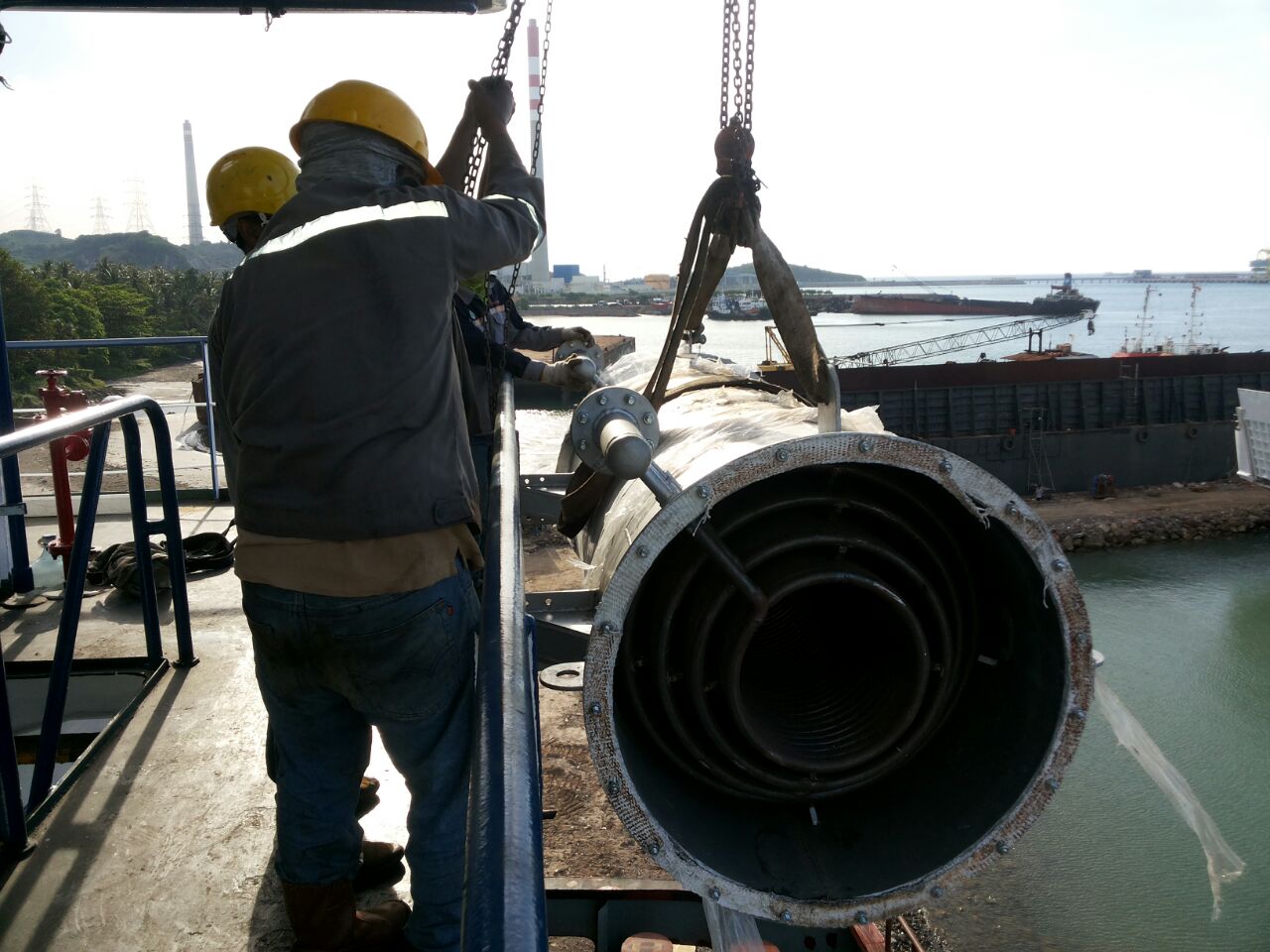Chimney boiler, Air System and Exhaust Gas
Air System and Exhaust Gas in Steam Power Generation
Stack / Chimney
The image results for a chimney or a chimney boiler
Stack or chimney is a device that serves as a medium for transferring gas flues to atmospheric air. Basically chimney also functions as an induced draft by using a difference in air pressure between the inlet side (which is at the surface of the ground) and air at the outlet side (which is higher at the end of the chimney) so that air will naturally flow from high pressure to lower pressure area
The air and exhaust gas system is a system that supports the combustion process in the boiler, this is done so that the combustion process can be controlled optimally so that a perfect and efficient combustion process occurs.
The air and exhaust gas system is a closed cycle that is basically different even though it occurs in the media, the same time and process. The air system in general is a system that functions as a medium for transporting coal to the boiler (primary air) while adding oxygen to the combustion process and making turbulence (secondary air). While the exhaust gas system is the output of the combustion process which is used to transfer the hot gas from the remaining combustion process to water and steam pipes and air heating elements.
Basically the relationship of the work process between the air and exhaust gas systems is as in the following scheme.
The air and exhaust gas system consists of several sub-systems as follows: Boilers
Boilers are the place where the combustion process takes place which is equipped with several equipment as follows:
1. Coal Burner
Equipment that serves to mix coal with air and as a nozzle to push the fuel mixture into the boiler furnace. The components of a coal burner are generally as follows:
Oil Gun functions to supply HSD during the boiler startup and initial shutdown process. In oil gun there are two main channels, namely fuel oil channel and atomizing water channel. Atomizing water serves to form HSD fuel fog to make it more flammable, while the oil gun functions as a lighter to ignite the fuel.
Air Damper serves to regulate the supply of combustion air that enters the boiler.
Coal Nozzle is the end of the entry of pulverized coal into the boiler furnace.
Flame Scanner is a fire sensor device that functions to read whether or not there has been a burning process on the burner.
2. Burner Tilting
Devices that function to regulate the combustion process to be more efficient and control steam temperatures so as to minimize the formation of NOx
Draft System
Draft system is an air system consisting of 3 main equipment types namely primary air fan (PAF), forced draft fan (FDF) and induced draft fan (IDF), and each has the following roles:
1. Primary Air Fan (PAF)
It is called a primary air fan because the main function of this fan is to distribute coal that has been smoothed in the mill / pulverizer to the combustion chamber / furnace / boiler.
2. Forced Draft Fan (FDF)
Also called secondary fan water and serves to provide positive pressure on the boiler and control the air and oxygen needed in the combustion process in the boiler so that it is expected to produce a perfect and efficient combustion.
3. Induced Draft Fan
Serves to provide negative pressure (vacuum pressure) on the boiler and transfer the remaining flue gas combustion from the boiler to the stack / chimney. The higher the flue gas air temperature and the percentage of oxygen coming out of the stack indicates that the combustion process in the boiler does not occur perfectly.
Air Preheater
Air Preheater is a system that functions as an initial air heater for primary water and secondary water to a certain temperature level, by utilizing heat from air flue gas carried by induced draft fan through a heating element called rotating heat exchanger. The main purpose of this preheating process is to increase the air temperature before entering the boiler so that the combustion process can occur quickly and efficiently, and to remove moisture from the air to prevent corrosion of metal equipment in the boiler.
Electrostatic Precipitator
Electrostatic Precipitator (ESP) is a helper system that functions to capture ash / ash from the results of the combustion process by giving a negative charge to the gray through an electrode device (discharge electrode). Furthermore, the ash will move into a column made of plate which has a more positive charge (collecting electrode), so that the ash will naturally be attracted and attached to the plates. After the ash accumulates on the plate, a special rapper system will make the ash fall down and exit the ESP system.
